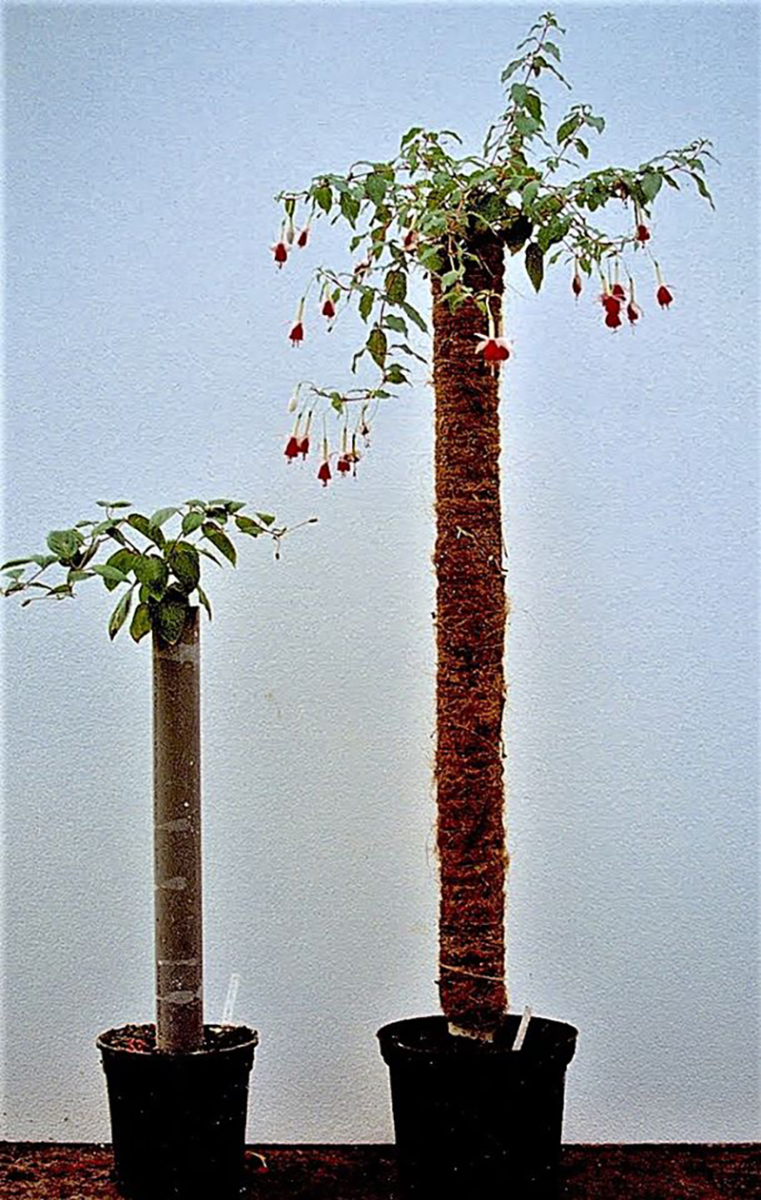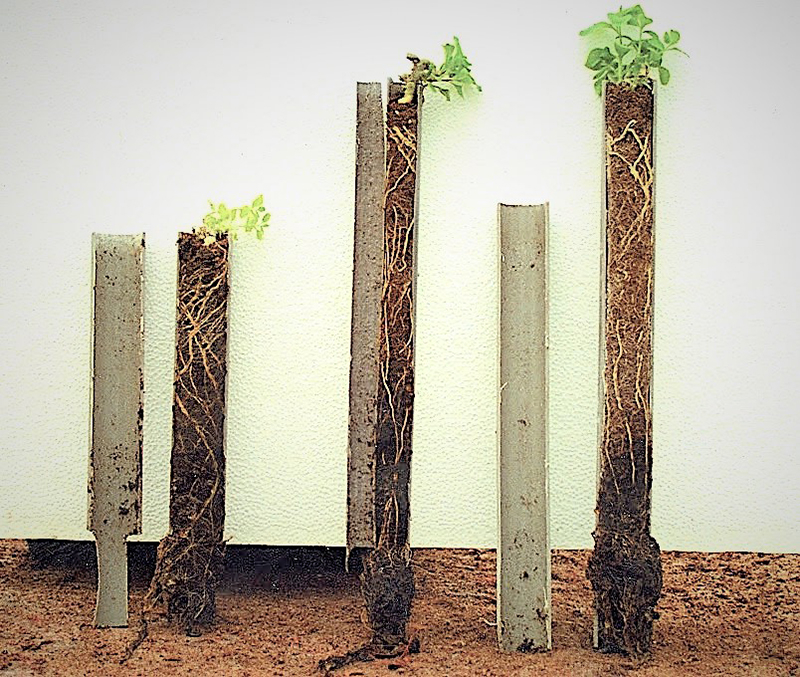- Home
- News
- An interesting experiment on tree saplings by Prof. Dr. Willem Van Cotthem (Ghent University, Belgium)
An interesting experiment on tree saplings by Prof. Dr. Willem Van Cotthem (Ghent University, Belgium)
24/06/2020 - 08:48
One of the major problems of planting tree saplings, e.g. for reforestation projects, is getting the nicely watered saplings, coming from the nursery, growing and surviving in a dry soil. In many cases survival rate of tree saplings in the field is rather low (even 30-40 % in some Western African countries).
Prof. Dr. Willem Van Cotthem explains...
Studying methods to improve these survival rates, we have set up some experiments with the soil conditioner TerraCottem, developed in my laboratory in 1982-1992. These experiments were set up in 1988 with my friend Gilbert Van Gampelaere, a skilled technician, at the Provincial Centre for Floriculture (PCS, Destelbergen).
Experiment 1. Testing root length of young Fuchsia plants in two long pipes, filled with a mixture of potting mix and thin layers of TerraCottem (TC) :

Left: Fuchsia growing in a transparent plastic pipe (to be able to follow the roots during their growth. When filling the pipe with potting mix, thin layers of TC were positioned at different heights (see whitish stripes in the pipe). At the moment of pouring water in the pipe, the water absorbing polymers in TC are absorbing a lot of the percolating water and they are transformed into hydrogels, which keep the surrounding potting mix moistened for quite a long time. As plant root tips are easily discovering where water is present in the soil, the roots are growing swiftly from the upper TC-layers to the lowest ones in the pipe. Thus, root length is significantly stimulated within the shortest time (see Photo 2).
Right: Fuchsia growing in half of a long pipe (cut longitudinally in two parts (see Photo 2), filled with potting mix and thin layers of TC at different heights. Here, the half pipe is surrounded by a layer of cocos coir fibers to keep the potting mix in place. The same effect of the presence of TC-layers in the pipe is registered : the roots are swiftly growing downwards to fill the complete pipe within the shortest time.
Experiment 2. Testing root length of ornamental seedlings in three PVC-pipes with different diameter, filled with a mixture of potting mix and thin layers of TerraCottem (TC) :

Left : Root growth in a broad pipe (diameter 8 cm)
Center : Root growth in a narrow pipe (diameter 5 cm), but longer than the one at the Left.
Right : Root growth in broad pipe (diameter 8 cm), but longer than the one at the Left.
RESULTS : In the 3 types of pipe the roots reached the bottom of the pipe during the same period of time.
It shows clearly that the presence of TC at different depths in the ground stimulates the roots to grow deeper and deeper. It is well-known that deeper layers in the ground are more humid than the upper ones and thus offer more chances for roots to find sufficient water to continue their growth after transplantation from the nursery.
CONCLUSION : This experiment shows obviously that one can create a positive effect on survival rate of tree saplings by ;
- Letting the saplings develop in long pipes with layers of TC at different heights.
- Dig deeper plant holes than the classical 30 x 30 x 30 cm ones and, when refilling those deeper plant holes with the same local soil, disperse a thin layer of granular TC at different depths in the plant pit.
This will certainly stimulate the tree saplings to develop rather quickly deeper and deeper roots (from TC-layer to TC-layer). The deeper the tree roots grow, the higher the survival rate.
Photos Gilbert Van Gampelaere and Willem Van Cotthem
Give your trees a fighting chance…
Discover how we can help youGive your trees a fighting chance…
Discover how we can help youTerraCottem Intl. SL
Apartado de Correos 4511190 Benalup (Cádiz)Spain
